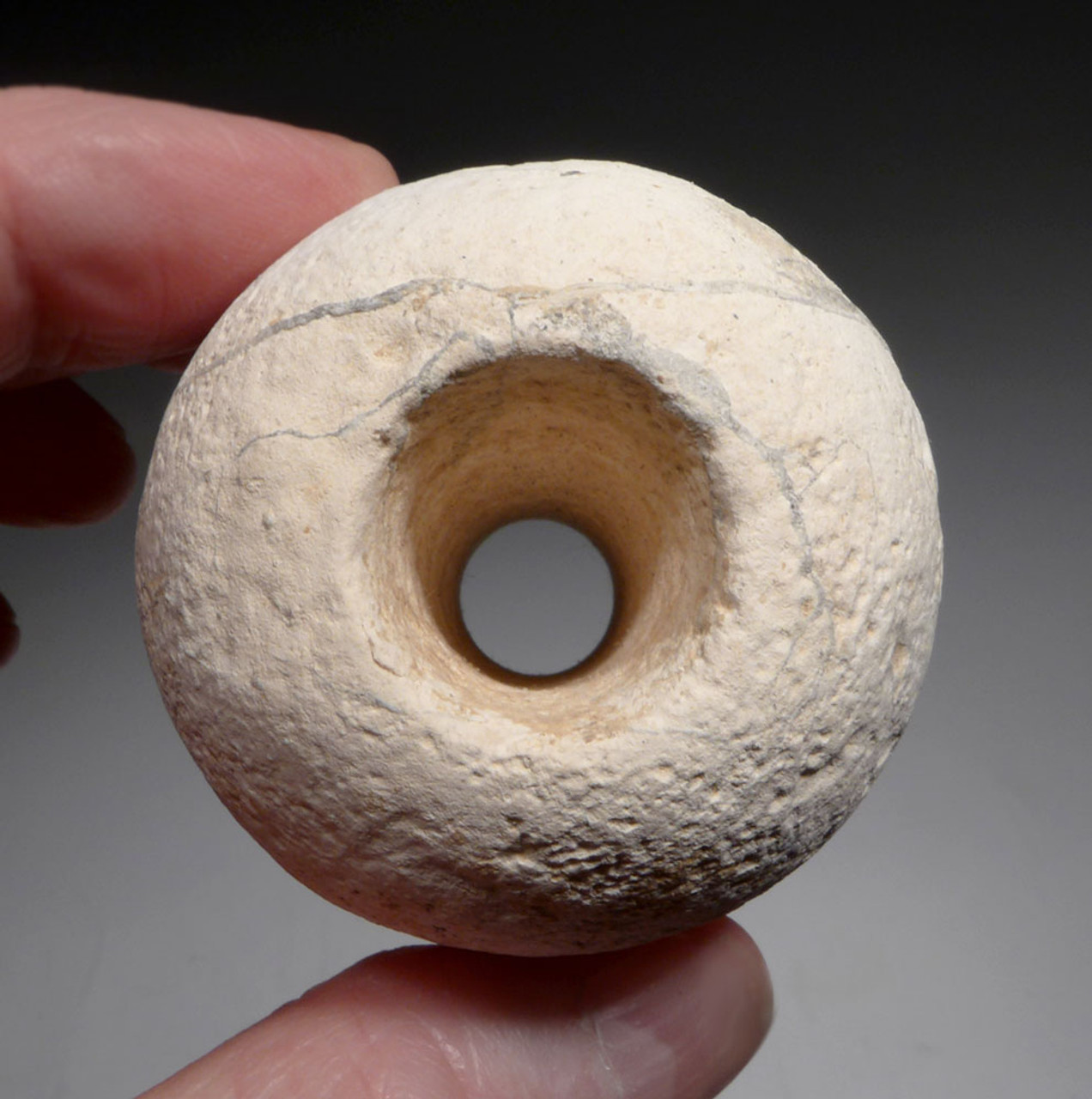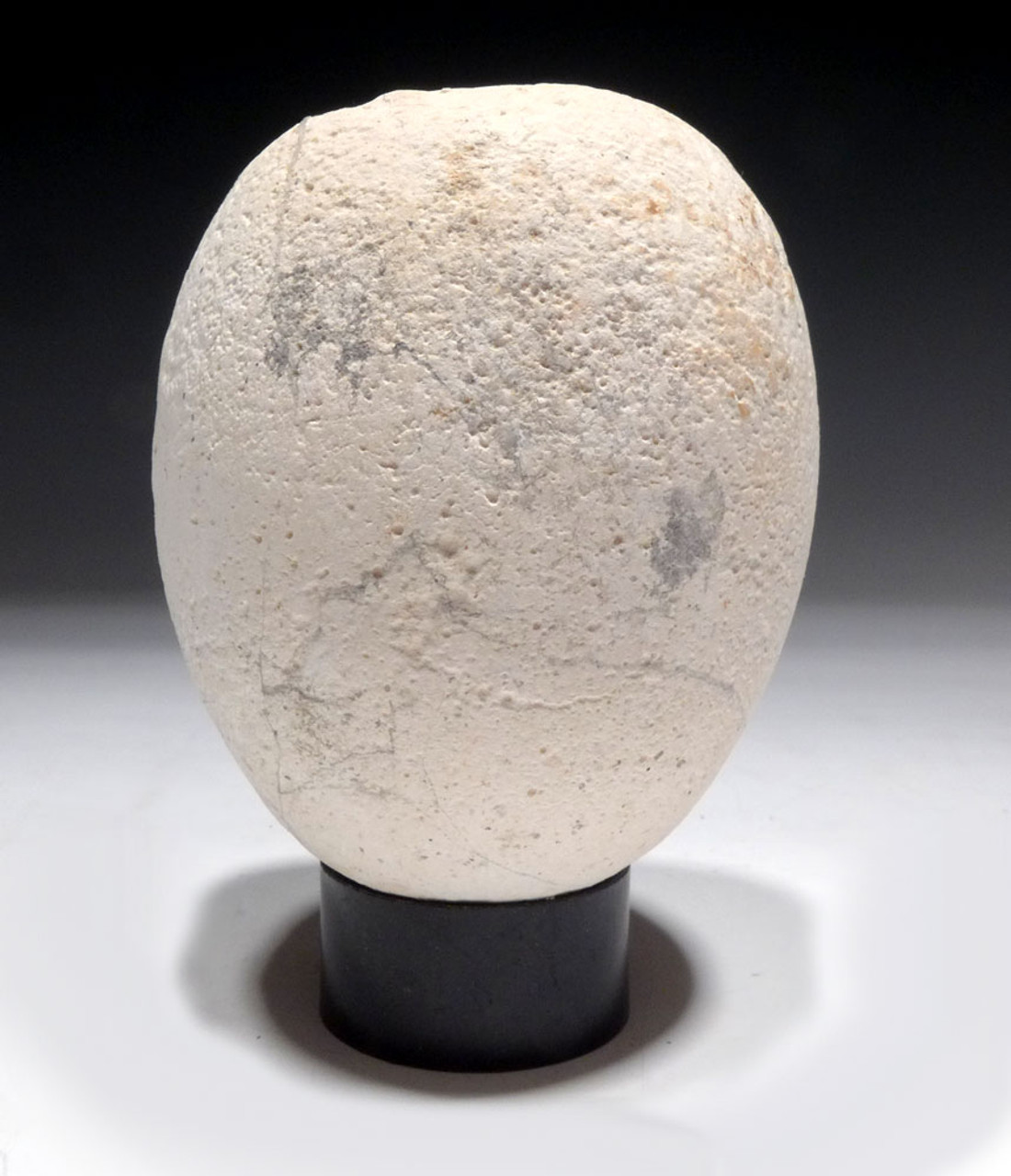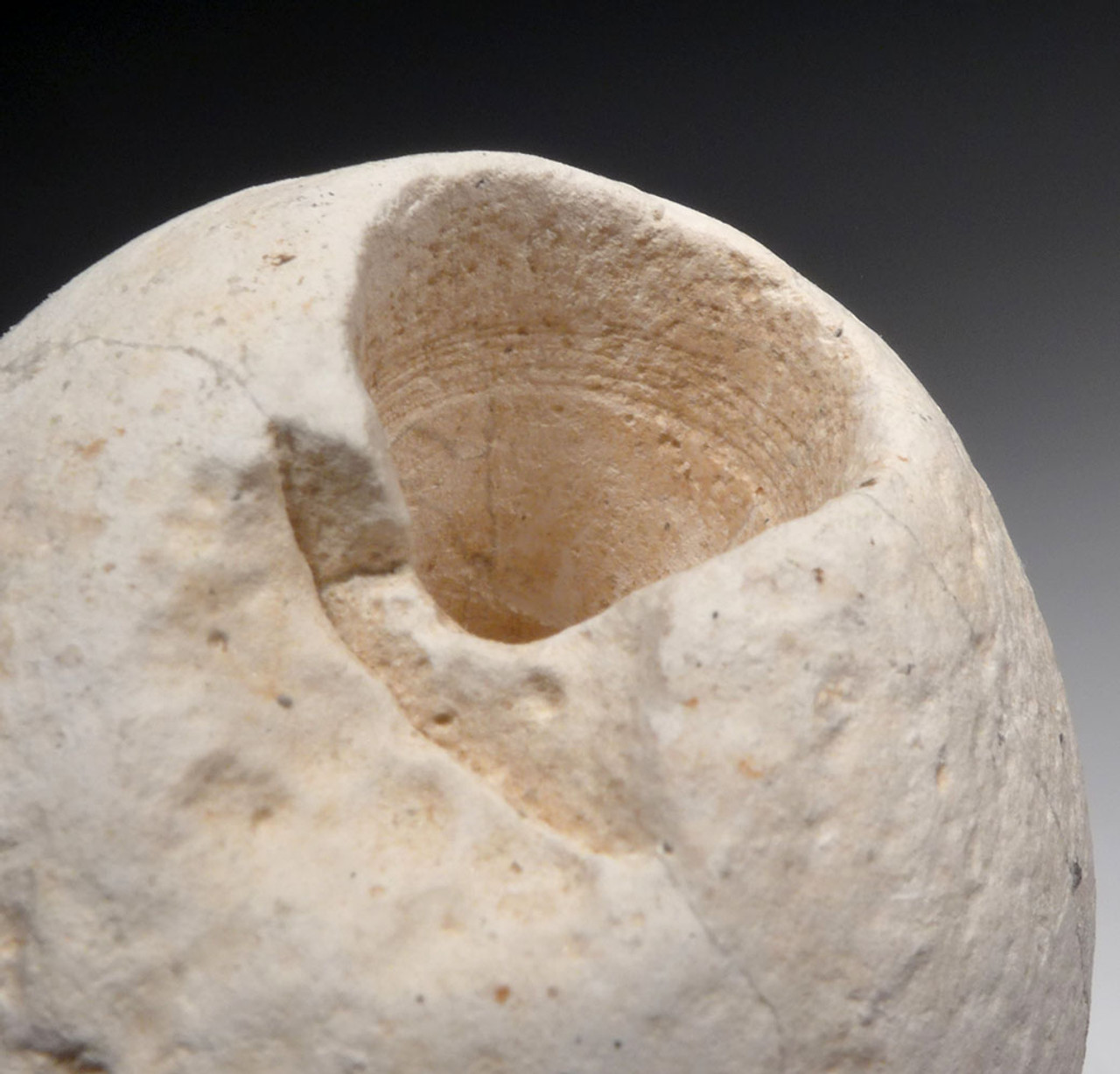Product Description
The mace is a very early type weapon requiring no skill or special training, and its effectiveness is obvious. Stone mace heads were first used in Pre-Dynastic Egypt in the 4th millennium B.C.. Earliest examples resemble discoidal-shaped stones that were ground and drilled to be mounted on a wooden handle. Maces were used in combat both on foot and in chariots and horseback extensively in Egypt and neighboring Canaan. This weapon was most effective on unarmored or lightly armored foes. Upon the advent of bronze, bronze armor and helmets became commonly worn during combat and as a result, the stone mace became much less effective as the stone heads shattered upon impact with the metal armor. Egyptians mace design included a sharper-edged disk shape in the Predynastic Period (about 3850-3650 BC) in order to increase penetration and impact force effectiveness but this design eventually became replaced in the Naqada II Period of 3600 - 3250 B.C. in Upper Egypt, with an inverted pear-shaped (piriform) design continuing in use throughout the Naqada III Period (3250-3100 BC). Similar mace heads were also used in Mesopotamia around 2450-1900 BC.
This is an intact and complete perforated Egyptian stone mace head made of alabaster dating to the Naqada 4th millennium B.C.. It is of the later PIRIFORM shape and despite its reduced size, was likely a very deadly weapon when used on a moving chariot or running horse against a stationary enemy. Damage to the shaft hole in the base indicates it was caused in battle from impact. Mineral and original soil traces are evident deep in crevices and in grinding marks, which are traits ONLY found on AUTHENTIC specimens like this.
The scarcity of ancient Egyptian weapons on the market demonstrates their immense rarity. Even in museum collections, only very seldom will you see any weapons on display as they are among some of the rarest ancient objects of that culture.
HISTORY
Scant archaeological evidence of Predynastic Egypt exists from 9000 BC to 6000 BC. At the end of the Pleistocene Period in the Nile Region, temperate conditions made for an ideal environment for the birth of a highly specialized Neolithic society between 7000 B.C. and 3200 B.C.. Continued expansion of the desert forced the early ancestors of the Egyptians to settle around the Nile more permanently, and adopt a more sedentary lifestyle during the Neolithic. Around 6000 BC, Neolithic settlements existed throughout Egypt. Studies have determined these settlements were founded by people from the Fertile Crescent in the Near East, moving to the area during the Egyptian and North African Neolithic and bringing farming to the region.
"Predynastic Egypt" is traditionally defined as the period from the final part of the Neolithic period beginning c. 6000 BC to the end of the Naqada III period c. 3000 BC. The dates of the Predynastic period were first defined before widespread archaeological excavation of Egypt took place, and recent finds indicating very gradual Predynastic development have led to controversy over when exactly the Predynastic period ended. Thus, various terms such as "Protodynastic period", "Zero Dynasty" or "Dynasty 0" are used to name the part of the period which might be characterized as Predynastic by some and Early Dynastic by others.
The Predynastic period is generally divided into cultural eras, each named after the place where a certain type of Egyptian settlement was first discovered. However, the same gradual development that characterizes the Protodynastic period is present throughout the entire Predynastic period, and individual "cultures" must not be interpreted as separate entities but as largely subjective divisions used to facilitate study of the entire period.
The vast majority of Predynastic archaeological finds have been in Upper Egypt, because the silt of the Nile River was more heavily deposited at the Delta region, completely burying most Delta sites long before modern times.
 US DOLLAR
US DOLLAR
 EURO
EURO
 AUSTRALIAN DOLLAR
AUSTRALIAN DOLLAR
 CANADIAN DOLLAR
CANADIAN DOLLAR
 POUND STERLING
POUND STERLING




















